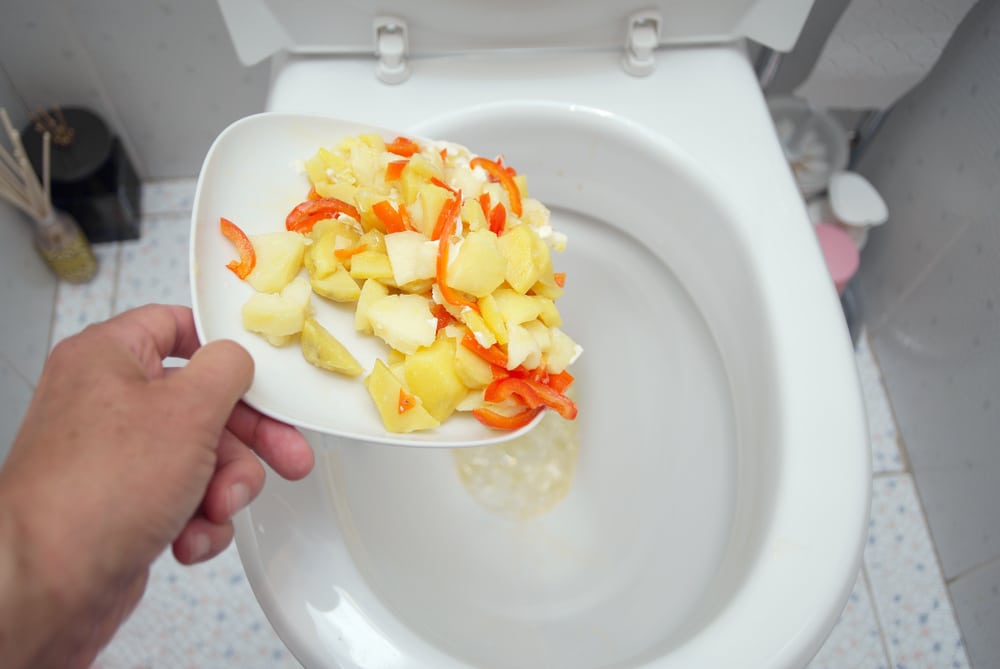Can You to Dispose of Food in the Toilet?
Can You to Dispose of Food in the Toilet?
Blog Article
What're your insights and beliefs about Flushing Food Down the Toilet??

Intro
Many people are usually faced with the predicament of what to do with food waste, particularly when it concerns leftovers or scraps. One usual inquiry that emerges is whether it's fine to purge food down the toilet. In this post, we'll explore the reasons that individuals may think about purging food, the repercussions of doing so, and different approaches for proper disposal.
Reasons that people may consider flushing food
Lack of recognition
Some people may not know the prospective damage brought on by purging food down the toilet. They might incorrectly think that it's a harmless practice.
Comfort
Flushing food down the commode might seem like a fast and easy option to dealing with undesirable scraps, particularly when there's no close-by trash bin offered.
Laziness
In many cases, individuals may simply choose to flush food out of large idleness, without taking into consideration the repercussions of their actions.
Effects of flushing food down the toilet
Ecological impact
Food waste that winds up in rivers can contribute to contamination and injury aquatic environments. Furthermore, the water utilized to purge food can strain water sources.
Plumbing problems
Purging food can bring about stopped up pipes and drains, creating costly pipes repairs and troubles.
Sorts of food that must not be flushed
Fibrous foods
Foods with coarse textures such as celery or corn husks can get tangled in pipes and create clogs.
Starchy foods
Starchy foods like pasta and rice can take in water and swell, leading to blockages in pipes.
Oils and fats
Greasy foods like bacon or cooking oils ought to never ever be flushed down the commode as they can strengthen and create clogs.
Appropriate disposal methods for food waste
Utilizing a waste disposal unit
For homes equipped with waste disposal unit, food scraps can be ground up and flushed through the plumbing system. However, not all foods are suitable for disposal in this way.
Recycling
Particular food packaging materials can be recycled, minimizing waste and minimizing environmental impact.
Composting
Composting is an environmentally friendly way to get rid of food waste. Organic products can be composted and utilized to enrich dirt for gardening.
The value of correct waste monitoring
Decreasing ecological damage
Appropriate waste administration techniques, such as composting and recycling, aid lessen contamination and protect natural resources for future generations.
Protecting pipes systems
By staying clear of the method of flushing food down the bathroom, home owners can protect against expensive pipes repairs and preserve the stability of their pipes systems.
Final thought
In conclusion, while it may be appealing to purge food down the bathroom for convenience, it is necessary to understand the potential consequences of this action. By embracing appropriate waste monitoring methods and disposing of food waste properly, individuals can contribute to much healthier plumbing systems and a cleaner atmosphere for all.
FLUSH FOOD DOWN THE TOILET?
FLUSHING FOOD CAN CAUSE BLOCKED DRAINS IN YOUR HOME
All of the plumbing fixtures in your home are connected to the same sewer pipe outside of your home. This outdoor sewer pipe is responsible for transporting all the wastewater from your home to the Council sewer mains. Even small pieces of food that go down the kitchen sink can cause problems for your sewer. It should therefore be obvious that flushing larger bits of food, such as meat, risks a clog in either the toilet itself or the sewer pipes. Flushing greasy food is even more problematic because oil coagulates when it cools, coating the interior lining of your pipes.
THE TOILET IS NOT A BIN
Food isn’t the only thing that people shouldn’t be flushing down the toilet. People use the toilet to dispose of all kinds of things such as tampons, makeup wipes, dental floss, kitty litter and even underwear. Water goes to great lengths to educate residents about the high costs and stress placed on wastewater treatment systems simply from people flushing the wrong stuff down the toilet. It costs taxpayers millions of dollars each year, and homeowners thousands in blocked drain repairs.
FLUSHING FOOD IS A WASTE OF WATER
Flushing food is a waste of our most precious resource - water. In June this year Level 1 water restrictions were introduced to protect water supply from drought conditions. Much of New South Wales continues to be affected by prolonged drought with recent figures revealing up to 97 per cent of the state remains in drought. Depending on whether you have a single or dual flush toilet, every single flush uses between five and 11 litres of water. In the current climate this is a huge amount of water to be wasting on flushing food that should be placed in the bin (or better yet, the compost).
https://www.jabplumbingsolutions.com.au/blog/can-you-flush-food-down-the-toilet

We had been shown that write-up about Think Twice Before Flushing Food Down Your Toilet from a buddy on another website. Are you aware of another person who is interested in the niche? Feel free to share it. Many thanks for being here. Don't forget to check our website back soon.
Book Report this page